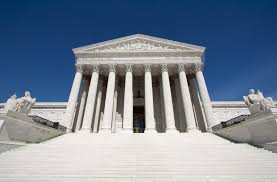More than 65,000,000 (one in four adults) people in the U.S. have some form of criminal record. For each of them the consequences of a criminal record carries both legal disability and a social and economic stigma. Collateral consequences of a conviction impose legal restrictions including the loss of civil rights, voting privileges, disqualification from many professions, loss of economic opportunities from lenders, credit providers, educational opportunities and grants, public assistance and publicly funded training programs. The U.S. Congress has convened a Task Force under the House Judiciary Committee. The bipartisan Over-Criminalization Task Force has conveyed and taken testimony. The National Association of Criminal Defense Lawyers has appeared before the committee to provide the House with information and insight. The Task Force will study and produce suggestions to address the collateral consequences on the federal level. The committee has heard testimony that across the board mandatory collateral consequences be eliminated.
The bipartisan Over-Criminalization Task Force has conveyed and taken testimony. The National Association of Criminal Defense Lawyers has appeared before the committee to provide the House with information and insight. The Task Force will study and produce suggestions to address the collateral consequences on the federal level. The committee has heard testimony that across the board mandatory collateral consequences be eliminated.
Expected findings are that the collateral consequences fall disproportionately on racial and ethnic minorities. Many members of Congress were clearly looking for information and guidance from criminal justice activists and the Department of Justice. The issue involves the loss of productivity and the total economic and social costs borne by the U.S. economy when persons with criminal records cannot become tax-paying citizens and become less productive or non-productive members of the community.
The Task Force will study and consider changes in the laws and policies so that as a national policy the nation will:
- Seek to end second-class legal status and stigmatization of persons who have completed their sentences;
- Only impose collateral consequences for specific offenses and not all convictions;
- Impose collateral consequences on recent offenders and create a route for consequences to be eliminated with the passage of time and proof of improved conduct;
- Restore legal rights and status upon completion of sentence;
- Design and implement a program whereby individuals can earn the right to end collateral consequences;
- Permit individuals charged with a crime to avoid collateral consequences by court-sanctioned programs;
- Encourage decision makers such as lenders and landlords to review on a case-by-case basis individual offenders who have had collateral consequences lifted;
- Fund States to purge old in inaccurate criminal records;
- Encourage criminal lawyers to seek avoidance of collateral consequences in plea negotiations; and
- Fund public education programs.
For more information, read:
NACDL’s Executive Summary of its report: “Collateral Damage: America’s Failure to Forgive or Forget in the War on Crime – A Roadmap to Restore Rights and Status After Arrest or Conviction”
 South Florida Criminal Defense Lawyer Blog
South Florida Criminal Defense Lawyer Blog






 significant impact on the price of its stock. Specifically when a class action is filed by groups of individual stockholders who have collectively lost big money.
significant impact on the price of its stock. Specifically when a class action is filed by groups of individual stockholders who have collectively lost big money.


 In the sale of the Clippers, it is a form of incompetency, which may force Mr. Donald Sterling to accept his share of a $2 billion deal, against his stated conscious intent. In criminal courts, the issue of the competency of a defendant is often the first issue raised by the defense attorney. Competency has different meanings in different legal situations. In Los Angeles, when the Sterling group, headed by Mr. Sterling’s wife, put their basketball team up for sale Mr. Sterling said ‘No sale.’ Notwithstanding his resounding “NO!,” reportedly, the sale is being forced through. The reason, according to the
In the sale of the Clippers, it is a form of incompetency, which may force Mr. Donald Sterling to accept his share of a $2 billion deal, against his stated conscious intent. In criminal courts, the issue of the competency of a defendant is often the first issue raised by the defense attorney. Competency has different meanings in different legal situations. In Los Angeles, when the Sterling group, headed by Mr. Sterling’s wife, put their basketball team up for sale Mr. Sterling said ‘No sale.’ Notwithstanding his resounding “NO!,” reportedly, the sale is being forced through. The reason, according to the 
 Felons are disqualified from most professions. Felons cannot obtain student loans. Felons cannot reside in Public Housing. Felons are denied educational and training programs. A household living in a public housing facility cannot receive back into their home a convicted felon family member; the entire family must be removed for housing a convicted felon. The systemic isolation and denial of the tools for rehabilitation serve neither the victim nor the community. Someone with a felony conviction is limited in his or her employment opportunities, housing and credit. In one generation, the U.S. prison population has gone up by a factor of four, as there are 2,200,000 inmates in U.S. jails and prisons, which is five to ten times the incarcerated rate of other democratic nations. One in nine inmates are in for life terms. Both
Felons are disqualified from most professions. Felons cannot obtain student loans. Felons cannot reside in Public Housing. Felons are denied educational and training programs. A household living in a public housing facility cannot receive back into their home a convicted felon family member; the entire family must be removed for housing a convicted felon. The systemic isolation and denial of the tools for rehabilitation serve neither the victim nor the community. Someone with a felony conviction is limited in his or her employment opportunities, housing and credit. In one generation, the U.S. prison population has gone up by a factor of four, as there are 2,200,000 inmates in U.S. jails and prisons, which is five to ten times the incarcerated rate of other democratic nations. One in nine inmates are in for life terms. Both